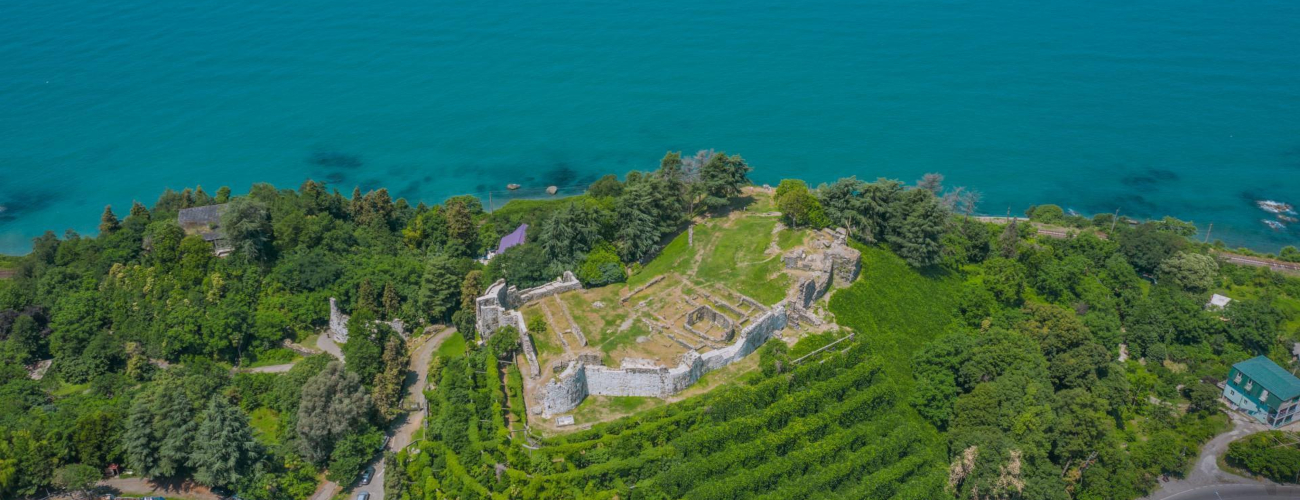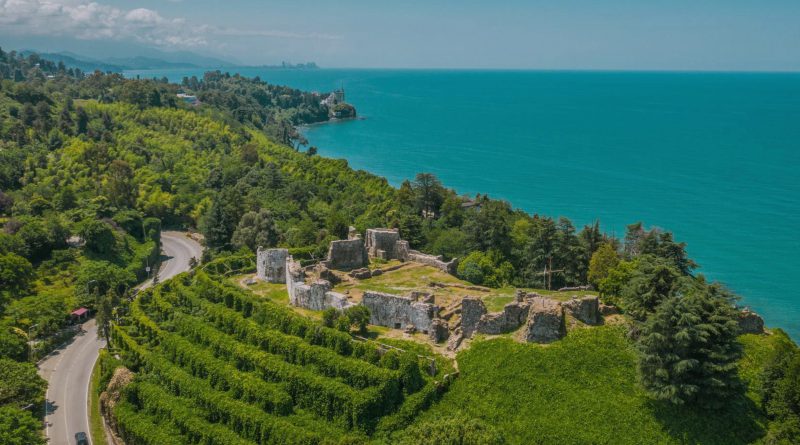Petra fortress – a place that will take you back in time
If you want an interesting adventure and a trip to the past, you should definitely visit Petra fortress. It is a fabulous place, with a huge beach hidden in greenery, amazing sound of sea waves and blue sky that leaves an unforgettable impression on the visitors. If you decide to visit this place, you will have to go to Adjara, Kobuleti municipality, to the territory of Tsikhisdziri village. The fortress-city is located on the coast of the Black Sea, 440 meters above sea level, 9 km from Kobuleti. “Petra” is the Byzantine name of this fortress-city, and in Georgian it is called “Kajeti Castle””.

The fortress-city of Petra is located on a rocky hill by the sea, it was protected by a wall and a rocky terrain from the land side, which is why it was considered an impenetrable fortress. The archaeological complex included a citadel, an outer city and a settlement. Today in the citadel there are ruins of a palace, an ancient bathhouse, agricultural and military quarters, as well as the foundation of a basilica of the VI-VII centuries, which is the remains of the Episcopal Cathedral of Petra.
From the 30s of the XIX century until now, its history has been the subject of discussion by historians and has attracted a lot of attention of researchers. Several excavations were also carried out, the first in 1934 by Janashia, and the second in 1953 under the direction of Khoshtaria. As a result of the excavations carried out in 1908, a rich burial site was discovered, which established that the Petra fortress was a residence of Eristavi in the first centuries of the new era.
.jpg)
During the Byzantine era, Petra Fortress played a big role in the political life of Western Georgia. A narrow seaside road passed through the territory of the city, which connected Western Georgia with Iran and Armenia. In this way, sea-cabotage sailing from Byzantium to the eastern coast of the Black Sea was controlled. Accordingly, the interest of Byzantium and Iran towards this city was great, which led to the Great Egris War in the middle of the 6th century. Later, during the period of the United Kingdom of Georgia, it seems that the city no longer existed here. According to the report of the Venetian ambassador Ambrozio Contarini, in the 70s of the 15th century, there was a small town here, which he calls in a distorted form “Caltikhea” or “Kajeti Castle”. In the 20s of the XVIII century, Tsikhisdziri was captured by the Ottomans, and in 1878 it was returned to Georgia by the Treaty of Berlin. In the 19th century, during the construction of the Baku-Batumi railway, the western part of the castle was blown up. Today, the fortress-city remains in the form of ruins.




